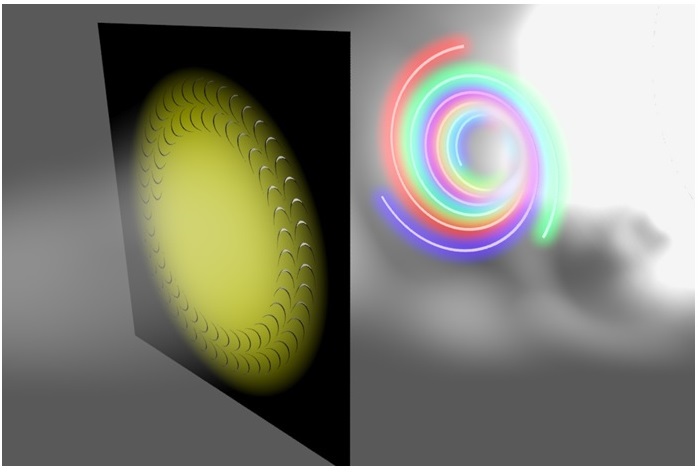Nov 02, 2015
Optical and photonic devices have become critical in current military and civil applications, such as laser weapons, remote sensing and infrared detection. Traditional optical devices are bulky and heavy because they rely on the phase accumulation on a long optical path. In an article published in Science Advances, a journal founded by the American Association for the Advancement of Science (AAAS), Prof. Xiangang Luo from the Chinese Academy of Sciences and the co-workers have now demonstrated that ultrathin and lightweight optical devices could be constructed using nanostructures catenaries, which were typically used in architectures to construct incredible buildings. The famous catenaries can be found in the arches under the roof of Gaudí’s Casa Milà, Barcelona, Spain and the Gateway Arch in St. Louis, Missouri, United States.
The catenary is the curve that a free-hanging chain assumes under its own weight. It is a “true mathematical and mechanical form” in architecture described by Robert Hooke in the 1670s. The researchers now use optical catenary-shaped structures to convert circularly polarized light to helically-phased beam that carrying geometric linear phase profile. Similar to the “catenary of equal strength”, the phase gradient of the optical catenary is equal everywhere, which is a direct result of its special geometric shape. “The catenary structure could find applications in optics, architectures, and many other disciplines. This means that we could construct novel optical devices with strong similarity to the structures occurring in the natural world.” Prof. Luo explains.
Many previous methods use discrete nanostructures to generate space-variant phase distribution. The discrete structures lead to strong resonance, which makes the operating bandwidth of these samples limited. Prof. Luo’s group at the State Key Laboratory of Optical Technologies on Nano-fabrication and Micro-engineering (SKLOTNM), therefore uses the continuous catenary structures to obtain much broader bandwidth. They demonstrated that broadband orbital angular momentum (OAM) could be achieved by using the catenary array. The operating bandwidth of the devices could covers the entire electromagnetic spectrum ranging from microwave, terahertz, and infrared to the visible regime.
The catenaries could be used as a unique building block for optical metasurfaces, which are thought to be the key of the next-generation integrated optical systems. According to the metasurface-assisted law of reflection and refraction, many novel optical elements, such as flat lenses, axicons, and prisms, could be obtained with performance far beyond their traditional counterparts. Prof. Luo says, “The method of using catenary nanostructures to modulate phase works in many different circumstances. On the one hand, these nanostructures are natural candidates for the light manipulation on the nanoscale. On the other hand, when these structures are fabricated on flexible substrate, very lightweight and large-aperture lens could be realized. Such lenses make very large space telescopes become possible.”
Paper information:
M. Pu, X. Li, X. Ma, Y. Wang, Z. Zhao, C. Wang, C. Hu, P. Gao, C. Huang, H. Ren, X. Li, F. Qin, J. Yang, M. Gu, M. Hong, X. Luo, Catenary optics for achromatic generation of perfect optical angular momentum. Sci. Adv. 1, e1500396 (2015). DOI: 10.1126/sciadv.1500396













